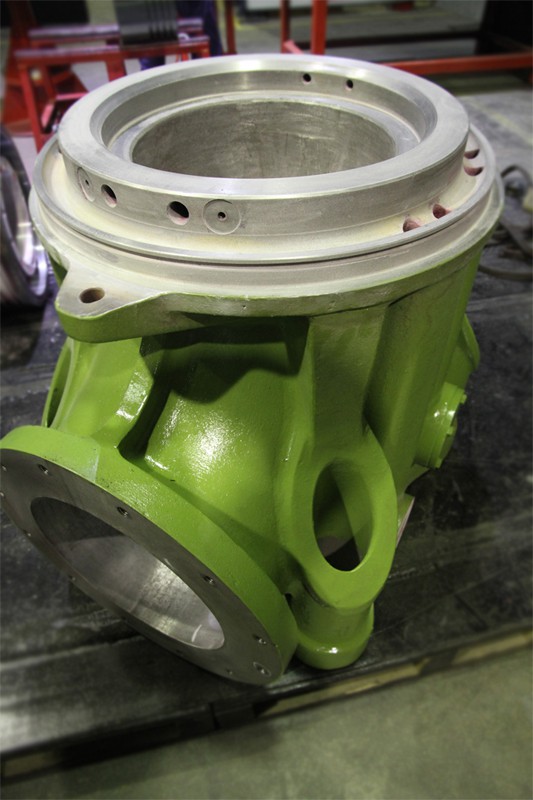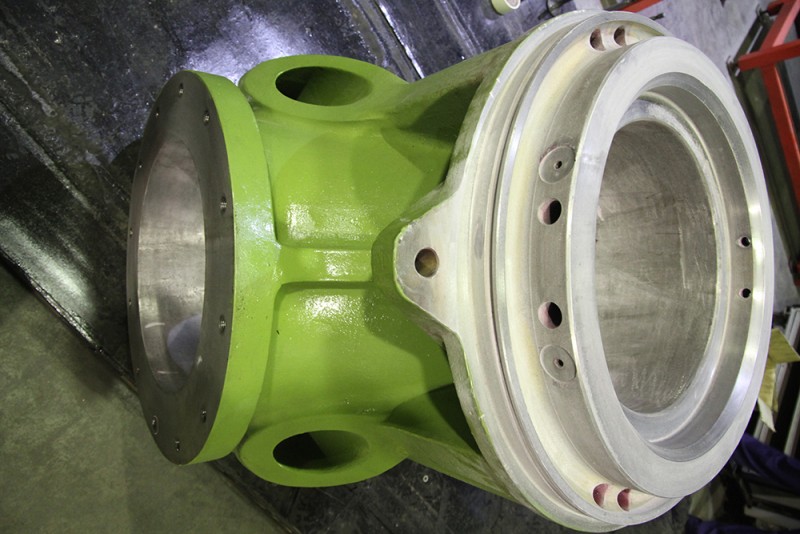Exhaust Valve Housing & Cages
Exhaust Valve Housing
An exhaust valve housing holds the spindle in position and guides its motion. Severe corrosion on the internal surfaces of exhaust valve housing is caused by the formation of sulfuric acid due to the presence of high sulfur fuel, high ambient humidity and high exhaust gas temperatures.
Common failures observed in exhaust valve housing include:
- High erosion inside the exhaust valve housing
- Misalignment of spindle guide
- Cracks inside the exhaust valve housing chamber
The DMI reconditioning process includes the following steps:
- Cleaning, pre-inspection and crack detection. We also use pressure testing to determine the extent and exact location of crack if required.
- Machining or grinding the identified cracked area until clean and sound material is achieved.
- Pre-heating of component until optimum welding temperature is reached.
- Control heat input so that desired welding temperature is maintained.
- A carefully selected, self-manufactured filler material of the same grade as the base metal is fuse welded with the component.
- Cooling from fluid state to ambient temperature ensuring a stress free homogeneous weld repair.
- Machining or grinding of welded area to match the original profile.
- Re-bushing of spindle guide if found misaligned.
- Pressure testing of component to ensure no leaks are present.
Exhaust Valve Cages
Most exhaust valve cages are reconditioned for the following defects:
Cages with damaged seats can have the seat face machined back to sound base material, built up and re-profiled. Subsequently, the seating area can be re-stellited and machined back to original dimensions.
In case of blocked internal cooling passages, it is possible to remove the entire nose and replace it with new steel forging which is welded into place by using sophisticated DMI weld processes.
DMI Dubai's Fusion Weld Repairs
Exhaust valve housings are commonly made of cast iron which tends to be brittle and less ductile posing difficulties in conventional weld repairs.
DMI Dubai reconditions exhaust valve housing with the help of an indigenously designed fusion welding method. Fusion welding of cast iron ensures a homogeneous stress free weld repair with improved metallurgical and machining properties compared to those of the parent metal. Materials to be welded here will be mostly gray cast iron. Gray cast iron has virtually no ductility and is always brittle. If the forces of expansion or contraction, as generated during the welding operation or in cooling post welding, are concentrated in one area of the casting, cracking of the casting or of the cooling weld, will almost certainly occur. Therefore, whenever cast iron components are welded, extreme precautions is taken in order to achieve a homogenous stress free weld.
-

Exhaust Valve Housing
-

Exhaust Valve Housing